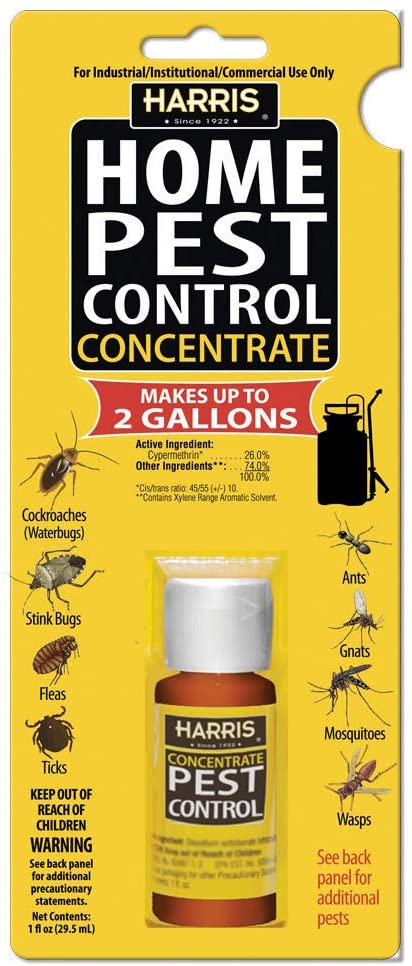Bed Bug Therapy Breakdown: Contrasting Chemical Vs. Non-Chemical Solutions
In the realm of parasite control, particularly when dealing with the persistent issue of bed insects, the option between chemical and non-chemical therapy services can be a pivotal one. Both methods offer unique benefits and downsides, affecting variables such as efficiency, security factors to consider, and total price. By analyzing the nuanced information of each method, a clearer understanding of which course to pursue in attending to a bed bug problem can be acquired.
Effectiveness of Chemical Treatments
Chemical treatments for bed pest problems have been widely acknowledged for their potent and rapid efficacy in eliminating these insects. When taking into consideration the efficiency of chemical treatments, it is vital to understand that they can offer a quick and thorough remedy to a bed pest issue. Expert pest control experts frequently count on insecticides to target bed bugs at different stages of their life process, including fairies, eggs, and grownups. These chemicals normally work by disrupting the bed bugs' nerve system, bring about paralysis and eventual death.
In addition, chemical treatments have the benefit of providing recurring impacts, meaning that they can remain to get rid of bed bugs also after the first application. This residual action is especially useful in combating any kind of potential re-infestations. Additionally, the fast action of chemical treatments can bring alleviation to people dealing with serious bed insect infestations, permitting them to gain back control of their space swiftly.
Security Interest In Chemical Solutions
One important facet that requires careful consideration when using chemical options for bed bug therapy is guaranteeing the security of passengers and the setting. While chemical therapies can be effective in removing bed pests, they may pose threats if not managed correctly. Among the key safety and security interest in chemical services is the possible injury they can create to human wellness. Direct exposure to specific chemicals utilized in bed insect therapies can cause breathing issues, skin inflammation, or various other unfavorable reactions, specifically in people with pre-existing problems or level of sensitivities. Additionally, inappropriate application or dosage of chemical pesticides can lead to hazardous residues lingering in the treated area, positioning long-lasting wellness threats to owners.
Additionally, the ecological influence of chemical remedies is an additional considerable factor to consider. Some chemicals made use of in bed pest treatments might be damaging to valuable bugs, wildlife, and environments if they leach right into the soil or water supply. It is important to make use of chemical therapies carefully, adhering to safety and security standards, and thinking about less harmful alternatives to alleviate these risks and make sure the reliable and risk-free administration of bed insect problems.
Benefits of Non-Chemical Techniques
Considering the prospective safety issues and ecological impact linked with chemical solutions for bed pest treatment, checking out non-chemical methods offers an appealing alternative with several distinctive benefits. Non-chemical techniques use a more secure option for houses, especially those with children, individuals, or pet dogs delicate to rough chemicals. These approaches get rid of the dangers of direct exposure to poisonous substances, minimizing the potential for unfavorable wellness effects. In addition, non-chemical treatments are eco-friendly, as they do not add to air or water contamination, making them a sustainable selection for pest control.
In addition, non-chemical remedies can be effective in targeting bed bugs, including hard-to-reach areas where chemical treatments might not penetrate. Methods such as warmth treatment, vacuuming, vapor cleansing, and bed mattress coverings supply comprehensive eradication without the use of dangerous chemicals. In addition, non-chemical approaches can be much less turbulent, calling for marginal preparation and enabling quicker reentry into treated areas. Overall, selecting non-chemical bed pest treatment techniques not only prioritizes safety and security and ecological defense but additionally ensures effective and detailed insect control.
Limitations of Non-Chemical Treatments

Additionally, non-chemical therapies commonly call for numerous applications to accomplish successful removal. This can be taxing and might not constantly ensure total removal of all bed pests and their eggs, specifically in surprise or hard-to-reach areas.
Additionally, the success of non-chemical treatments greatly counts on proper execution and thoroughness, which can be challenging for individuals without expert know-how. Inadequate application of non-chemical methods may lead to insufficient removal, causing persistent problems and the need for additional therapies.
As a result, while non-chemical treatments have their advantages, it is important to acknowledge these constraints and consider them when figuring out one of the most effective strategy for handling bed bug problems.
Cost Contrast: Chemical Vs. Non-Chemical Options
Provided the constraints associated with non-chemical therapies, a crucial element to assess in the context of bed insect administration is the cost contrast between chemical and non-chemical alternatives. In contrast, non-chemical treatments like heat therapy or heavy steam can be a lot more pricey, with expenses varying from $1,000 to $6,000 for a whole home. While the initial expense of chemical treatments may appear reduced, numerous treatments might be required to totally eliminate the problem, possibly increasing the overall cost.
Conclusion

Considering the potential security issues and environmental impact connected with chemical remedies for bed insect treatment, discovering non-chemical approaches provides a promising option with numerous unique benefits.Offered the constraints linked with non-chemical treatments, a vital aspect to evaluate in the context of bed bug administration is the price contrast between chemical and non-chemical alternatives. In comparison, non-chemical therapies like heat treatment or steam can be a lot more expensive, with prices ranging from $1,000 to $6,000 for a whole home. While the first cost of chemical treatments might appear lower, numerous therapies might be needed to fully eliminate the infestation, potentially enhancing the overall price.In final thought, when contrasting chemical and non-chemical bed pest treatment choices, it is important to consider effectiveness, safety general pest control and security, advantages, limitations, and price.